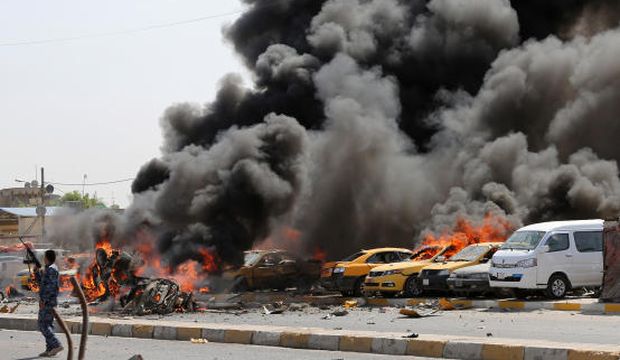There is no greater evidence of chaos enveloping the Middle East than the Libyan foreign minister’s inability to attend a meeting of the country’s neighbors in Tunis. The meeting went ahead in his absence, and he was represented by the Libyan chargé d’affaires in Tunisia. It was like holding a party without its host.
The minister was unable to attend due to the armed clashes around Tripoli airport, which coincided with other armed clashes in Benghazi. What is even worse is that for a while now the Foreign Ministry’s civil servants have been forced to run it from their own homes because armed militias have occupied the building, in protest against a number of issues including the dismissal of a Ministry official belonging to an Islamist group. Other reports said some Ministry documents were found strewn across the streets.
The problem with Libya, in addition to being part of the chaos that is spreading and threatening the region as a whole, is the ongoing disintegration of the state. The state has lost control over its territory to forces which are both heavily armed and disorganized.
Much the same situation can also be found in Yemen, Iraq, Mali, Nigeria—home to the radical Boko Haram—and Somalia, which faces an insurgency from the Al-Qaeda-linked group Al-Shabaab.
The forces threatening the state in each of these countries differ in terms of ideology in some cases, and their grievances vary, but the outcome is the same: chaos, loss of hope for a better future, and a high price paid by ordinary people struggling for their daily bread.
In Iraq and Syria—whose territories are partially overrun by the group calling itself the Islamic State of Iraq and Syria (ISIS)—a Western analyst, talking about the group’s declaration of an “Islamic State” on Iraq’s territory, said: “For the first time, we will have a clear postal address for terrorism which can be bombed or hit.”
However, the problem seems bigger than that. This is the outcome of years of neglect of national reconciliation and political inclusion. This failure has been made worse by bullying from sectarian militias, which created a very complicated situation that led many to talk openly about the division and fragmentation of the Iraqi state.
The division scenario also applies to Syria, where a popular political uprising turned into an outright civil war with regional and international dimensions. This has caused everyone to look more skeptically at the forces present on the ground. However, the belief that has begun to form is that the most likely scenario is a re-drawing of the region’s borders once the fighting stops.
The story is different in Libya, where the chaos and the militias are eating away at the state, threatening to break it apart, according to people’s regional loyalties. Gaddafi may be responsible for things getting to where they are now, for failing to build strong state institutions during his rule, so when the revolution took place a vacuum of political authority followed. However, much of the blame rests with the members of the country’s political class, who have backed their narrow interests and affiliations.
Some parties affiliated with the Muslim Brotherhood hijacked the country’s political transition, leading to the current confrontations in a number of large cities. This strengthened the armed militias’ hand, who also took control of oil ports, instead of strengthening the security forces belonging to the new republic. The security of neighboring states became threatened because of the affiliations of these groups to similar groups in those neighboring countries.
Yemen is another model for fragmentation and the erosion of state authority. It is true that armed groups equal in strength to the army and the police have existed for a while due to the tribal structure. But even during the worst crises, the challenge to the state’s authority was never as strong as the one being displayed now by the Houthis’ control of the city of Amran, only some 30 miles (50 kilometers) north of the capital Sana’a. The southern part of the country is also under fire, with Al-Qaeda active in many areas there.
The scene has become one of an expanding circle of chaos, creating new conflicts which no-one could have imagined. This is the case with the conflict that is emerging between Al-Qaeda and ISIS, which is pulling the rug of terrorism from under the feet of the older organization.
Overall, it is a scenario that will only lead to ruin if there is no determination and courage to confront it. Otherwise, the request for international protection made by Palestinian President Mahmoud Abbas will not be limited to Gaza or the Palestinian territories, but will also include Arab states where authority has eroded and fallen into the hands of armed groups and militias.
